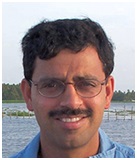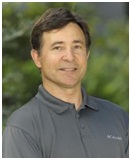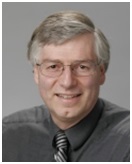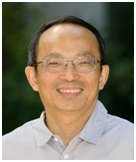报告题目:Scalable Scientific Image Informatics 
时间:2014年11月21日 上午8:30-9:20
地点:玉泉校区行政楼108会议室
报告人: Professor B. S. Manjunath
Biography:
Abstract:
This talk will present recent work at the Vision Research Lab and the Center for Bio-Image Informatics at UCSB. First I will present an overview of the various research projects, including wide area camera networks and biologically inspired vision. The main talk will focus on scalable image informatics with emphasis on microscopy data. Recent advances in microscopy imaging, image processing and computing technologies enable large scale scientific experiments that generate not only large collections of images and video, but also pose new computing and information processing challenges. These include providing ubiquitous access to images, videos and metadata resources; creating easily accessible image and video analysis, visualizations and workflows; and publishing both data and analysis resources. In this context, I will describe the BISQUE (Bio-Image Semantic Query and Environment) open-source platform for integrating image collections, metadata, analysis, visualization and database methods for querying and search. We have developed new techniques for managing user-defined data models for biological datasets, including experimental protocols, images, and analysis. Bisque is currently used in many laboratories around the world and is integrated into the iPlant cyber-infrastructure (see http://www.iplantcollaborative.org) which serves the plant biology community. For more information on Bisque see http://www.bioimage.ucsb.edu

报告题目:Visual Computing for Mobile Remote Collaboration
时间:2014年11月21日 上午9:20–10:10
地点:玉泉校区行政楼108会议室
报告人:Professor Matthew Turk
Biography:
Abstract:
Collaborating remotely on tasks that require engagement with the physical environment is difficult with existing videoconferencing technologies, since they do not adequately support a shared 3D space or ways to effectively communicate spatial information. We propose a framework for unobtrusive mobile telecollaboration that integrates the physical environment, supporting rich interaction by using computer vision-based tracking and mapping, along with augmented reality techniques to communicate spatial information about a novel scene. This allows for a decoupling of the participants’ views of the environment based on a real-time tracking and mapping technique that supports general camera motion (both rotation-only and translational movement) in the 3D environment. The approach effectively integrates panorama mapping and tracking with a keyframe-based SLAM system, behaving like one or the other depending on the camera movement, with no prior information about the environment. We describe the framework and prototype system, a user study to evaluate the benefits of the interface, and experiments in building scene models to support the remote collaboration.
报告题目:III-V Semiconductors, Metals, Heusler Compounds and Perovskite Oxides Heterostructures by Molecular Beam Epitaxy:
Semiconductor Spintronics and More 
时间:2014年11月21日 上午10:30–11:20
地点:玉泉校区行政楼108会议室
报告人:Professor Chris Palmstrøm
Biography:
Abstract:
In this presentation I will discuss some of the unique epitaxial growth and in-situ characterization facilities available at UCSB and give a brief overview of a number of projects involving the molecular beam epitaxial growth and characterization of different heterostructures. These range from the growth of conventional As-, Sb- and P- based III-V semiconductor heterostructures, with quantum wells and two dimensional electron gas structures for qubit and quantum computing applications, epitaxial semimetal-III-V semiconductor nanocomposites for thermoelectrics, epitaxial ferromagnetic metal/III-V semiconductor heterostructures for semiconductor spintronics, novel half Heusler semiconducting compounds to Perovskite oxides for studies of metal-insulator transitions.
报告题目:Mobile Heterogeneous Systems: From Emerging Memories for Mobile 
Teraflops Computing to Microsystems for Healthcare
时间:2014年11月21日 上午11:20–12:10
地点:玉泉校区行政楼108会议室
报告人:Professor K.-T. Tim Cheng
Biography:
Cheng, an IEEE fellow, received 10 Best Paper Awards from various IEEE conferences and journals. He has also received the 2004-2005 UCSB College of Engineering Outstanding Teaching Faculty Award. He served as Editor-in-Chief of IEEE Design and Test of Computers and was a board member of IEEE Council of Electronic Design Automation’s Board of Governors and IEEE Computer Society’s Publication Board. He has also served as General and Program Chair for several international conferences including Program Chair for 2012 IEEE International Test Conference.
Abstract:
In this presentation I will give a brief overview of some recent projects at the Learning-Based Multimedia Lab, the SoC Design and Test Lab, and the DoD/AFOSR Center of 3D Hybrid Circuits at UCSB. First, I will give an overview of recent efforts in Center of 3D Hybrid Circuits on monolithic 3D integration of CMOS and memristive nanodevices. Our initial prototype, combining the advantages of mainstream CMOS technology with the extremely high density of memristor crossbars and interface vias, could enable 3D hybrid computing systems with unprecedented memory density and memory bandwidth at manageable power dissipation. I will then discuss several efforts on adaptation and mapping of complex vision algorithms to heterogeneous mobile application processors for achieving real-time performance with minimized energy consumption. Finally, I will present a context-aware ECG patch, jointly developed by Zhejiang University and UCSB in the past three years, which can capture patients’ and athletes’ ECG signals anywhere anytime, together with relevant context information.







 您的位置 :
您的位置 : 